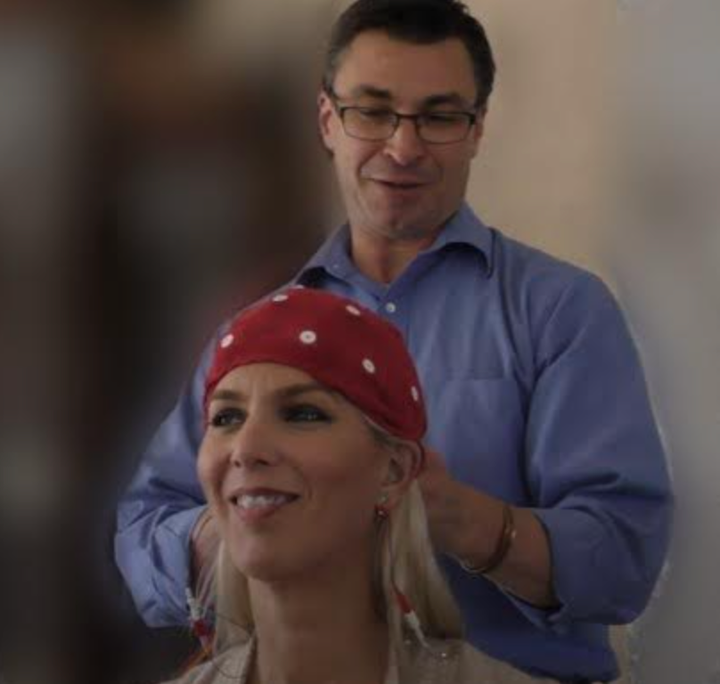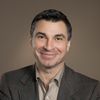
As a young child, I was captivated by any stories or movies that had anything to do with the supernatural. When I was growing up in the late ’70s, hit movies included “Star Wars,” “E.T.,” “Close Encounters of the Third Kind,” and “Poltergeist.” Uri Geller was on TV bending spoons with his mind, and every other household seemed to have an Ouiji board. In this context, belief in the supernatural just made sense.
At the time, it seemed obvious there were still many mysteries to be understood and explored. While I would have given anything to have some kind of “superpower,” I also envisioned myself as a junior scientist. Of course, I had no idea what that really meant, but I would collect magazine articles about demonic possession, ghosts or aliens, imagining that I would need these later as “evidence.” Rather than playing sports, I would ride my bike around the neighborhood, “investigating” possible UFO landing sites. Even at the age of 9, I wanted to move beyond belief and “prove” that these things were real.
My stepfather, who was in my life from ages 9-20, was emotionally abusive. A Vietnam War veteran, he dealt with his trauma by drinking. He was controlling, unhappy and unpredictable. It made sense that I had adopted beliefs in supernatural powers. They created the hope that I could be special. My frequent daydreams about being taken aboard an alien spacecraft and whisked away to a foreign planet also made sense. In my mind, I could escape my situation and start a new life.
As I got older, pursued graduate training in psychology, and adopted a more professional identity, I became more cynical and skeptical. I wrote off a vast majority of my previous supernatural beliefs as wishful thinking. I looked at my own childhood fantasies as psychological attempts to escape or to feel powerful.
I began reading magazines like The Skeptical Inquirer and Skeptic, which used critical thinking to debunk extraordinary claims. From this perspective, humans were simply viewed as very good at deluding and fooling ourselves. Rational and logical thinking dictates that we see belief in ghosts and paranormal abilities as psychological reactions and tricks of the mind.
Meanwhile, my psychology training program was shaping a particular way of viewing the world — that an atheistic, logical, and rational approach was the only one with validity. Belief in the paranormal was associated with immaturity (at best) and psychopathology (at worst). Consciousness was seen as arising from the neural connections of the brain. When we stop breathing and the brain ceases its functions, consciousness is lost, and the body decays. There is no God. There are no ghosts. Nothing is real unless science can prove it. I was no longer open to experiences and possibilities outside the realm of what was considered “normal,” but that was all about to change.

In 2013, while working at the University of Missouri, something happened that reignited my interest in the paranormal and changed my life forever. Just before graduating and moving away, one of my research assistants announced that he wanted to tell me about his mother. He seemed nervous and cautious, and I had absolutely no idea what was coming next. Why was he acting so weird? I felt like he was getting ready to tell me some bad news, and I was bracing myself. He proceeded to tell me a long and complicated story about his mother, Janet Mayer.
Apparently, Janet began spontaneously speaking South American tribal languages after participating in a holotropic breathwork session. What a relief! No bad news after all. Wait, what!? Spontaneously speaking South American tribal languages? I can see why he would be cautious about sharing this news. It sounded ridiculous.
After the breathwork session where the languages emerged, Janet claimed she learned how to access this ability simply by shifting her awareness. Of course, at that point, she wasn’t even certain that what she was speaking was a language. It felt and sounded like a language, but nobody seemed to recognize it. It was possible that she was just making up sounds that gave the appearance of a language. Perhaps she was speaking in tongues?
In an attempt to understand what was happening, Janet recorded herself during these language experiences and sent the tapes to professors and researchers from all over the United States. While many experts were polite, they had no idea what was happening.
After four years of searching, Janet eventually found someone who could help. The late Dr. Bernardo Peixoto, an anthropologist at the Smithsonian Institution and a shaman was originally from the Urueu-Wau-Wau tribe in Northern Brazil, where he was known as Ipupiara or Ipu. He recognized something in Janet’s recordings and indicated that she was speaking Yanomami, a South American tribal language. This was the confirmation Janet had been looking for.
Even though she didn’t know what she was saying, she always felt that there was a meaning behind the sounds — that they weren’t just nonsense. When her exact words were translated, they generally took the form of prayers and teachings related to honoring Mother Earth. Over time, Ipu translated several tapes and reported that Janet sometimes spoke other South American tribal dialects, including Fulnio, Tukano, and Kanamari.
Janet knew that I conducted EEG brain imaging and was open to participating in a series of experiments to measure what was happening in her brain when she allowed the languages to come through. One of the first things I noticed was a significant change in the EEG signals coming from sensor locations in the back right quadrant of the brain. Instead of the normal, nice, neat patterns we expect to see, these signals jumped off the screen and almost looked like seizure activity. After double and triple-checking my equipment and finding the same change in activity on several testing occasions, I had to accept that something dramatic was happening in Janet’s brain.
It turns out that the specific location involved was in the right parietal lobe (RPL). This part of the brain is involved in defining and perceiving the self, self-related thoughts, perception of the body, and autobiographical memory. Basically, when this part of the brain is doing its job, it creates an understanding of the “self” as a separate and discrete entity associated with the definition of “me.” When this part of the brain is damaged or goes “off-line,” like it did with Janet, it is associated with feelings of spiritual transcendence and a softening of boundaries between “self” and “other.”
Somehow, it appeared Janet was able to temporarily disrupt the functioning of her RPL, presumably allowing her to shift her consciousness in a way that some would claim allowed other forms of consciousness to speak through her. Despite what I thought I knew about reality, and as crazy as it sounded, I was left with the conclusion that Janet was somehow channeling several people, beings, or entities.

We presented our findings at the Forever Family Foundation Conference, which is an organization devoted to the exploration of “life after death.” This experience introduced me to a whole new world of psychic mediums and scientists attempting to understand how these abilities were possible.
I continued mapping brains and expanded my research to include telepathy, ESP, telekinesis, energy healing and mediumship. What started as a “random” story from a student turned into a decade of research which eventually formed the basis for the book ”Becoming Psychic: Lessons from the Minds of Mediums, Healers, and Psychics,” and convinced me that these abilities are real. Unlike what we see in the movies, they are not always consistent, and the results are not always mind-blowing. However, I have seen enough to make me believe that our minds are capable of much more than most of us dare to imagine. While we may not fully understand how or why, it seems clear to me now that psi abilities are a natural and normal part of human experience, and that scientists should dedicate more time and resources to exploring them.
When these abilities are inconsistent, messy, vague, or complicated, it is because our brains are interfering. I believe it is our “left-brained” tendency to analyze, judge, and predict that prevents us from tapping into this wider field of knowledge. Perhaps the challenge is understanding how the mind works and learning how to intentionally navigate varied states of consciousness. We’ve only just begun to scratch the surface of this area of study and there is much more for us to discover and learn.
Of course, there are those that would (and do) argue that I am engaging in pseudo-science, wasting my time, and perpetuating a set of lies that support charlatans. While I would never deny that there are fraudulent psychic mediums exploiting the vulnerable and grieving, the evidence suggests that there are also people out there with legitimate abilities. Having reversed my previously held beliefs about psi, I would ask other skeptics to look at the evidence and keep an open mind. We should allow our skepticism to guide us in these endeavors, but when faced with proof, we should be willing to (re)consider what we thought was true. In fact, I would argue that this is the heart of the scientific method — to explore the unknown with a willingness to discard hypotheses that are no longer tenable. I would also note that so many things we once thought were magical or impossible — from magnets to medical cures — were simply mysteries awaiting a scientific explanation.
Personally, this exploration has opened my mind to a whole new world of possibility. Having witnessed “the impossible” on numerous occasions — in scientific settings, no less — I have come to accept that consciousness can extend far beyond the physical body. This new perspective has given me hope, reduced my fear of death, deepened my spirituality, and left me a more compassionate human being.
These were not outcomes I was expecting or seeking but seem to be a natural result of this work. Whether we will ever be able to definitively “prove” that psi abilities are “real” remains to be seen. But perhaps that is not the point. Perhaps this entire exploration is an exercise in learning to work effectively with both hemispheres of the brain, moving smoothly between logical, structured, analytic processing, and more subtle, mysterious, intuitive ways of understanding. Can we be scientists and mystics; skeptics and believers? I believe the answer is yes.
Jeff Tarrant, Ph.D., BCN, is the author of the book “Becoming Psychic: Lessons from the Minds of Mediums, Healers, and Psychics.” He is also the founder and Director of Psychic Mind Science and the NeuroMeditation Institute in Eugene, Oregon. Tarrant is a licensed psychologist and board certified in neurofeedback, and specializes in teaching, clinical applications, and research combining technology-based interventions with meditative states for improved mental health. His research focuses on exploring brainwave changes that occur as a result of contemplative practices, technological interventions, non-ordinary states of consciousness, and psi related abilities.
Do you have a compelling personal story you’d like to see published on HuffPost? Find out what we’re looking for here and send us a pitch at pitch@huffpost.com.
